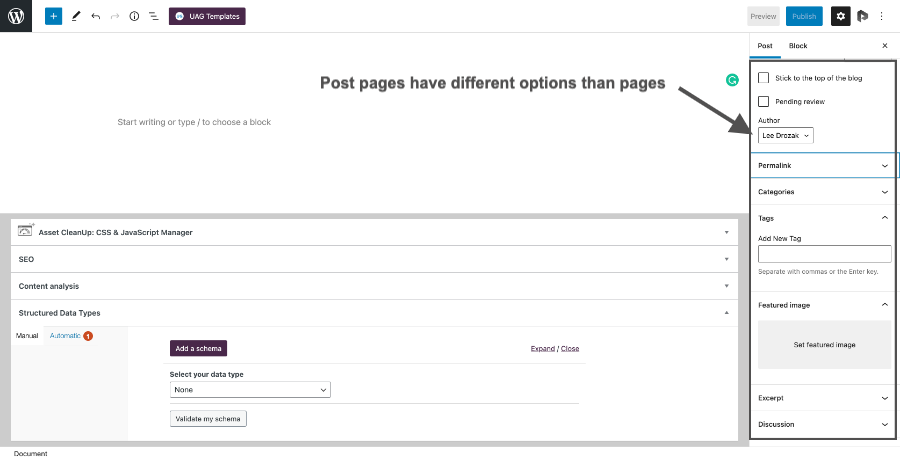WordPress Terms: Pages or Posts, What’s The Difference?
When I began using and designing my websites using WordPress, the first thing I had to nail down was the terminology and how all the moving parts worked together to make a functioning website. For me, pages and posts were an easy concept to grasp, and I believe it will be for you to know the small differences.
Some think there isn’t much difference between a page and a post or what to use when. Add to that custom post types, which add s more functionality like portfolios, calendars, events, and so much more.
But from a usability standpoint, there is a difference. Keep reading to find out which you should use, page or post.

Pages
Pages are meant to be static, and while you may change or update them, they usually remain constant. The page includes such things as your About, Service, Privacy Policy, and Contact. Content on these pages may never change for the life of the page, but you may need to make edits like adding an image, updating like adding a new team bio or changing like tailoring a headline.
While the WordPress database stores the published date, the pages are timeless, meaning they are not set to expire. Because there is no date tied to the page, they won’t be included in your RSS feed. Pages also can’t be categorized or tagged like the posts.
With pages, you can also have sub-pages, so they are hierarchical.
Having sub-pages in your structure allows you to organize your pages and assign custom styles or templates to them. So your Services page could be your parent page, and your offers or individual services can be sub-pages.
As a rule, you generally don’t include comments on the page; for some, you won’t need social sharing (think privacy and terms).
If using a page builder such as Beaver Builder, you can create a unique layout for every page if that is what you desire. Gutenberg allows you the same flexibility, too, to design the page as interactive as you’d like.
In the end, though, the role of the page is to display static content that does not require much once it’s published.
Posts
Posts, on the other hand, make up the dynamic content on your website. Posts are meant to be timely and usually listed in reverse chronological order on your designated (Blog) page. Copy within a post should contain fresh, relevant content that can be updated and edited as needed.
Posts are made up of information and news on specific topics and subjects. Posts can be organized into categories and tagged with terms that make them easily searchable. However, posts can not have sub-pages, unlike pages, making the categories an essential part of the hierarchy.
Because posts that have published dates attached to them can be syndicated through RSS feeds. Typically, readers are notified if a new post is released, and they are subscribed to your RSS feed. Dates, categories, or tags can archive older posts.
Posts usually encourage interaction or conversation; therefore, commenting is usually turned on, and social sharing is available for the content.
Posts are more templated ad basic in terms of design because the role is for easy reading and simplicity. While you can certainly use a page builder for the content, it is not recommended to add if you want uniqueness; Gutenberg will allow that.
Posts also have two display options – archive and single. The archive page can be made up of all published posts or individual categories, so it’s easy to display similar topics and content. The single template is the individual blog posts, and the layout is consistent with each article published.
Posts and Page
There is a vast difference between posts and pages, but some things are consistent for both. Here are a few more things you should know:
- Search engines like fresh, relevant content, meaning content on both pages and posts is important to your website. However, priority can be given to timely content, but the value to the visitor is just as relevant.
- You can have as many pages and posts as you want. There is no limit to how many can be created, but they should be thought out as far as flow and usability.
- Featured images can be added to both pages and posts and are helpful when sharing your information on social channels, so while you normally don’t show the featured image for a page, it is important to assign one to each page.
Knowing the terms of WordPress is helpful in creating a dynamic and well-structured website. How are you mapping out your content for your users and visitors?
